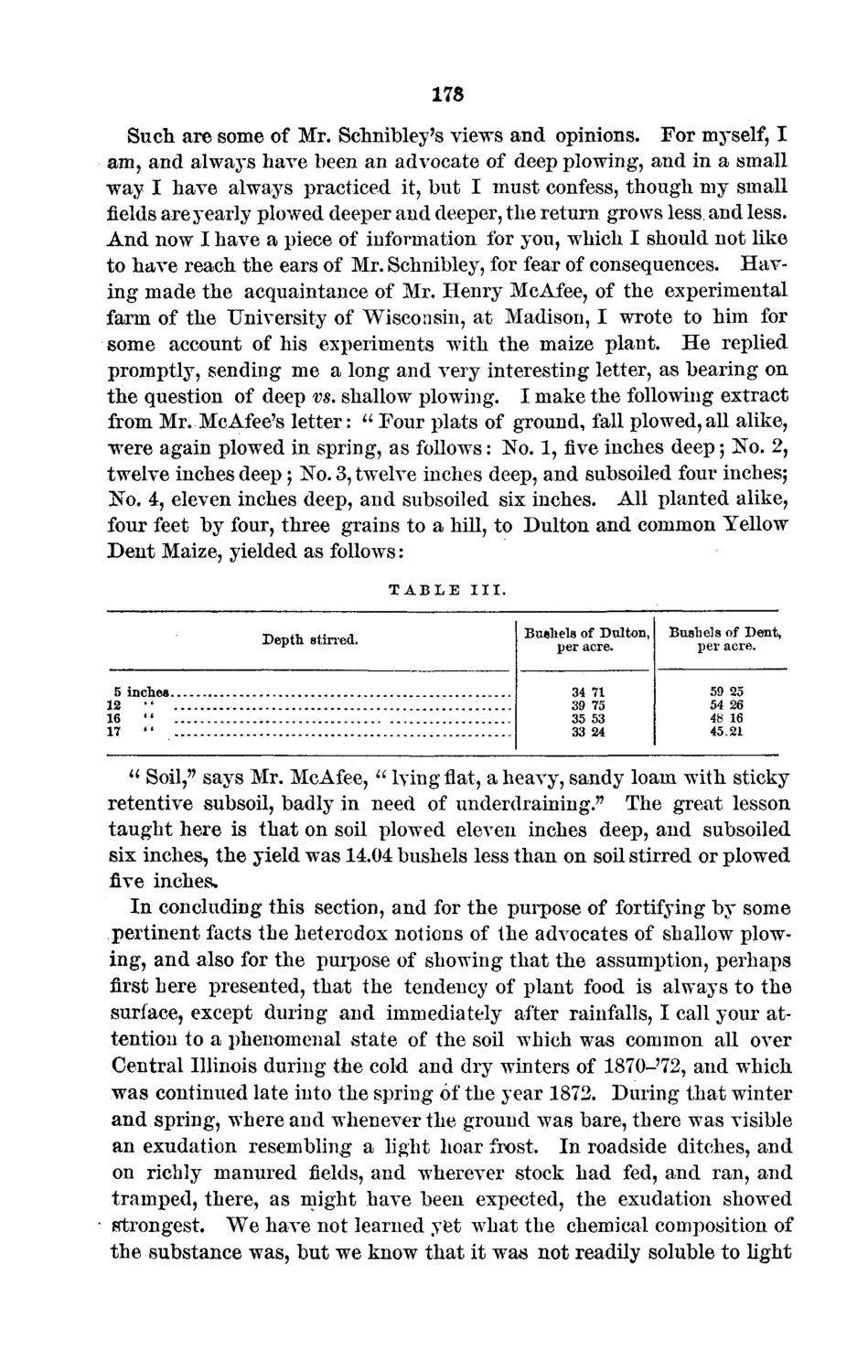| |
| |
Caption: Board of Trustees Minutes - 1872
This is a reduced-resolution page image for fast online browsing.

EXTRACTED TEXT FROM PAGE:
178 Such are some of Mr. Sehnibley's views and opinions. For myself, I am, and always have been an advocate of deep plowing, and in a small way I have always practiced it, but I must confess, though my small fields are yearly plowed deeper and deeper, the return grows less, and less. And now I have a piece of information for you, wrhich I should not like to have reach the ears of Mr. Schnibley, for fear of consequences. Having made the acquaintance of Mr. Henry McAfee, of the experimental farm of the University of Wisconsin, at Madison, I wrote to him for some account of his experiments with the maize plant. He replied, promptly, sending me a long and very interesting letter, as bearing on the question of deep vs. shallow plowing. I make the following extract from Mr. McAfee's letter: " Four plats of ground, fall plowed,all alike, were again plowed in spring, as follows: No. 1, five inches deep; No. 2, twelve inches deep; No. 3, twelve inches deep, and subsoiled four inches; No. 4, eleven inches deep, and subsoiled six inches. All planted alike, four feet by four, three grains to a hill, to Dulton and common Yellow Bent Maize, yielded as follows: TABLE Depth stirred. III. Bushels of Dulton, per acre. 34 71 39 75 35 53 33 24 Bushels of Dent, per acre. 59 25 54 26 48 16 45.21 5 inches 12 •' 16 " 17 " " Soil," says Mr. McAfee, " lvingfiat, a heavy, sandy loam with sticky retentive subsoil, badly in need of underdraining." The great lesson taught here is that on soil plowed eleven inches deep, and subsoiled. six inches, the yield was 14.04 bushels less than on soil stirred or plowed five inches* In concluding this section, and for the purpose of fortifying by some pertinent facts the heterodox notions of the advocates of shallow plowing, and also for the purpose of showing that the assumption, perhaps first here presented, that the tendency of plant food is always to the surface, except during and immediately after rainfalls, I call your attention to a phenomenal state of the soil which was common all over Central Illinois during the cold and dry winters of 1870-72, and which was continued late into the spring of the year 1872. During that winter and spring, where and whenever the ground was bare, there was visible an exudation resembling a light hoar frost. In roadside ditches, and on richly manured fields, and wherever stock had fed, and ran, and tramped, there, as might have been expected, the exudation showed strongest. We have not learned yet what the chemical composition of the substance was, but we know that it was not readily soluble to light
| |